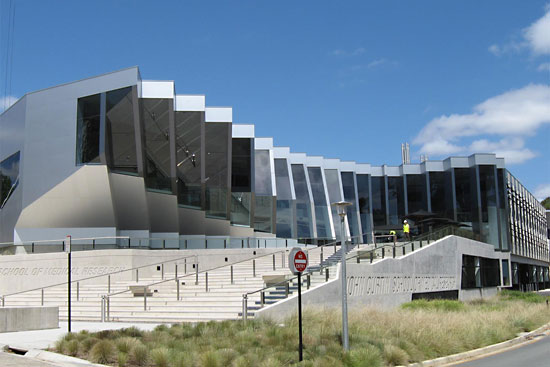ANU: ANU to advance Australia’s sovereign nuclear capabilities
This deal changes everything when it comes to nuclear science in Australia
With Australia, the United Kingdom and the United States signing a historic deal on nuclear powered submarines, The Australian National University (ANU) stands ready to train the next generation of nuclear scientists and practitioners and fill the gap in our existing nuclear workforce.
For more than 70 years, ANU has trained the nation and the world’s nuclear scientists and experts and is the only university in Australia providing comprehensive training in nuclear physics from the undergraduate to postdoctoral level.
ANU also runs the country’s highest energy heavy ion accelerator – the only facility in Australia dedicated to nuclear physics research which enables hands-on training.
Professor Andrew Stuchbery, Head of the ANU Department of Nuclear Physics, said the new deal provided an exciting opportunity for nuclear science in Australia, which until now had limited workforce needs in the field.
“This deal changes everything when it comes to nuclear science in Australia,” Professor Stuchbery said. “It ushers in a new era for the nation.
“In the past Australia’s nuclear technology workforce needs have been minimal and a lot of talented and trained people from across nuclear science have headed overseas.
“So it is absolutely vital we build sovereign capability in nuclear science. That’s exactly what we do every day at ANU.
“Our research-led teaching spans undergraduate and postgraduate levels and covers all aspects of nuclear science, including reactor science, nuclear fuel cycles and how to ensure policy debates on nuclear issues are informed by science and best practice.
“For decades we’ve been training the nuclear experts Australia needs to safely deploy nuclear energy and technologies, including intensive courses with the Department of Defence.
“We look forward to training the future generations of practitioners Australia will now need and who will help build, deploy and manage these new technologies as a consequence of this historic security deal.”
Professor Mahananda Dasgupta is the Director of the ANU Heavy Ion Accelerator Facility (HIAF), which is supported by the National Collaborative Research Infrastructure Strategy. She said the HIAF is the only facility in Australia dedicated to fundamental nuclear science research.
“With Australia now taking on nuclear-powered subs, it is vital that the workforce understands the underpinning science and gets hands-on training in handling sophisticated instruments. That’s what the HIAF enables,” Professor Dasgupta said.
“It drives new knowledge on fundamental nuclear processes, including nuclear reactions, nuclear structure, and highly sensitive detection methods to enable environmental monitoring at world-best levels.
“We also provide a lab environment for training personnel from government defence and national security agencies to learn and develop a hands-on understanding of nuclear science.
“Our facility is the largest of its kind in Australia and provides a unique resource for the nation and the region.
“In the HIAF, Australia has a facility already in place that will provide the cutting-edge the nation needs in this new era of nuclear research, teaching and training.”
Professor Tim Senden, Director of the ANU Research School of Physics, said ANU was established to lead Australia’s development and serve the nation.
“It is no different when it comes to the vital field of nuclear science,” he said.
“Australia will need talented, well-trained and knowledgeable experts in nuclear science. At ANU we have the capability, the will and the desire to deliver the experts our nation needs.
“There is no better place than ANU when it comes to harnessing the latest nuclear science research and teaching.
“We invite anyone with a passion for this field of study and work to join us.”

